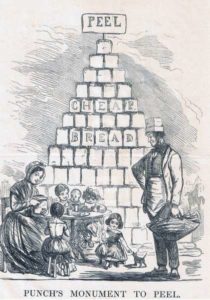At Another Turning Point after 150 Years
Dr. Xiaoming Guo of Waterloo
.jpg)
2017 is the 150th anniversary of Canada. 150 years ago, we initiated Confederation, catching up with a key turning point of a global trend, and beginning the industrialization of Canada. Today, we are facing another turning point and we again need to reposition our international standing just as we did 150 years ago.
In 1846, British Prime Minister Robert Peel decided to end the mercantile system and to adapt to free trade. The Peel government repealed the Corn Law, the protective tariff system that linked the Canadian economy to Britain. Peel favoured the industrialists who needed a world market for industrialization and a lower price for grain. The lower grain price not only lowered living costs, but also lowered industrial wages. The lower wages made the industrial products more competitive in the international market. The Great British Empire restructured the order of world economy. The Canadian staple economy repositioned itself in the new order. Canadian Atlantic trade with Britain shifted to transcontinental trade with America, the rival of Britain. 
By 1865, the American Civil War freed slaves from plantations, which prepared the labour force for industrialization. This American Civil War also enhanced the commercial power of its federal government, which weakened the power of states and strengthened international position of the United States of America. In 1863, Americans started building the Transcontinental Railroad. That was the historical turning point. What followed the Civil War and the Transcontinental Railroad was the rising of an industrialized America. The Civil War prepared for industrialization politically, and the railroad prepared for industrialization with infrastructure.
Canada was in danger of facing a giant rising to the South and Canadians felt the pressure of a world economic trend: industrialization. Just as the Civil War consolidated the formation of the United States of America, our colonies united to form a political entity in 1867. However, the process of industrialization was impossible without access to a market beyond community neighbourhoods. To enable this, Americans built the Transcontinental Railroad, which expanded access to the West. Canada also needed a railroad to enable its industrialization. Building such a railroad was impossible without confederation. Confederation and the railroad together became our indispensable national dream 150 years ago. Three British colonies united to form Canada’s Confederation for political consolidation and built railroads for market consolidation. The industrialization process did follow since we had positioned ourselves well in the arena as a united Canada with a ready infrastructure. Confederation was the turning point that led our industrial history.
Today, we are facing a situation similar to that of 150 years ago. We are facing a turning point of world economic adjustment. We may have to shift our trade from merely with the core to include emerging markets. 150 years ago, the core of world economy was London and the emerging market was America. Today, the core is Wall Street and the emerging market is centred in Asia. 150 years ago the turning point was from pre-industry to industry. Today the turning point is towards Fourth Industrial Revolution.
Since 2008, the global economy has been in stagnation. To break out of such stagnation, the world needs a new growing point and the growing point is the Fourth Industrial Revolution. Fourth Industrial Revolution became the theme of 2016 Davos Forum. The First Industrial Revolution was mechanics powered by the steam engine 150 years ago. The Second Industrial Revolution was the mass production by production line. The Third Industrial Revolution was the information revolution of Internet and computer. The Fourth Industrial Revolution is the merge of virtual space with real space, the Internet of Things. This will be a new paradigm of production and consumption.
The shift from pre-industry to industry was not easy. There were all kinds of social and political conflicts during the shift. However the trend was irresistible; it flowed steadfastly regardless of all the conflicts.
Today the global economy has been hesitating. Protectionism and globalization collide with each other. The global economy has been in stagnation since 2008 – -nearly a decade. We have exhausted our financial leverage to boost the economy, as our interest rate has been virtually zero. We exhausted our budgeting leverage to boost our economy as our debt has been skyrocketing. The world order has to change one way or another. The present status quo cannot sustain itself for long, as the debt accumulation will eventually break the system. Following the trend of the Fourth Industrial Revolution is inevitable. The question is whether we actively push the trend or passively be pushed by the trend.
2017 is our 150th anniversary. Why did we unite to form a confederated Canada 150 years ago? It was because the world order changed, because the economic trend turned, and because our international position altered. It had to happen regardless of the conflicts in the process: politically, economically, socially and culturally. The solution for all the conflicts is to respond to the global trend. This was true 150 years ago, and is true also for today. When a turning point approaches, a variety of conflicts will escalate. The only way out is to cross the chasm of the turning point, to catch up with the historical trend. Are we ready to reposition ourselves in the international arena so as to jump onto the bandwagon of industry’s turning point by embracing trade with emerging markets? Our success 150 years ago sheds light on today’s opportunities.
相关新闻
-
暂无信息